
Thinking of a career as a winemaker at Malivoire Wine on the Beamsville Bench? You’d do well to include “vineyard owner” on your resume.
A case in point:
Malivoire currently draws the largest share of its grapes from several vineyards comprising a combined 40 hectares. They are located within the Beamsville Bench, Lincoln Lakeshore, Vinemount Ridge and Twenty Mile Bench sub-appellations.
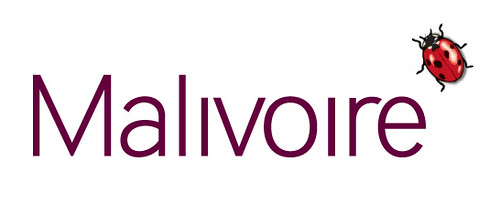
Moira Vineyard
The birthplace of Malivoire’s original wines is the Moira Vineyard, purchased on the Beamsville Bench in 1995. So taken was owner Martin Malivoire by its breathtaking escarpment scenery, he also made it his home. With excellent drainage and a low water table, the Moira Vineyard is distinguished by vines whose deep roots ensure robust health and vigorous fruit acidity.
Estate Vineyard
The Moira Vineyard’s six planted hectares was Malivoire’s springboard, but more acreage would be needed for the fledgling winery to expand. The answer came the following year when Malivoire acquired another farm not far away. Occupying 13 hectares on the Bench, this became the site of Martin’s winery and Estate Vineyard. Located on a glacial moraine rising as high as 30 metres above the lakeshore plain, and resting under a dominant escarpment, it offers its vines superior airflow and water drainage.
Mottiar Vineyard
Two kilometers west of the winery, perched atop a high moraine ridge is the Mottiar Vineyard, the property of Malivoire Winemaker Shiraz Mottiar. This three-hectare site, because of its higher elevation, is typically cooler than the other farms and yields fruit with distinctive minerality.
Stouck Vineyard
Another significant property is the 8-hectare vineyard owned for generations by the family of Malivoire assistant winemaker Dan Stouck. It is here, in an exceptionally warm pocket of Lincoln Lakeshore rich in alluvial soils overlying the rocks and gravel of a post-glacial beach, that Cabernet Sauvignon and Merlot is grown and began entering the Mailvoire portfolio in 2008 to critical acclaim.
So, four vineyards, and half of them tied directly to the winemaker and assistant winemaker. As noted, want a job at Malivoire? Bring a vineyard with you.
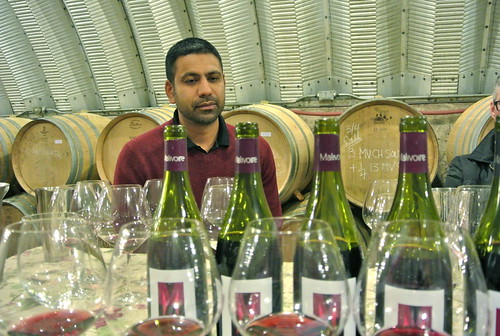
Malivoire has always been about the vineyard. It’s Martin Malivoire’s driving philosophy that you have to start with the best of the basics: location, soil, vines, practices and infrastructure. After that comes the intangibles: philosophy, objectives, reason, creativity, dedication and energy. These come from people.
For Malivoire, a director of motion picture special effects in his previous life whose career encompassed everything from television’s Wayne and Shuster Comedy Hour to such Hollywood big-screen attractions as Resident Evil, A Christmas Story and Hairspray, it has been all about surrounding himself with good people.
And it begins with winemaker Mottiar (above photo) who has built an impressive portfolio that continues to grow and include more single-vineyard bottlings with each passing vineyard.
The Malivoire story has been a work in progress with plenty of twists and turns along the way.
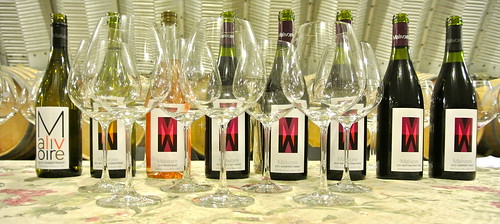
Once the poster boy for organic farming, Malivoire decided to abandon its certified organic status in 2010 after suffering a crippling round of black rot in the estate vineyards. The choice at the time was clear: Lose the vineyards or lose the certification.
“We had vine health issues,” says Mottiar. “We were spraying far too much copper (allowed in organic farming) to be healthy.”
While Malivoire no longer has its organic certification and likely won’t seek it again it still considers itself an operation with minimal environmental impact.
The winery and its support structures were designed and equipped for minimal energy consumption. Barrels, corks and other supplies are purchased from reputable producers with proven track records for sustainable operations, and its use of high-quality, lightweight glass bottles helps reduce the consumption of fossil fuels in transportation.
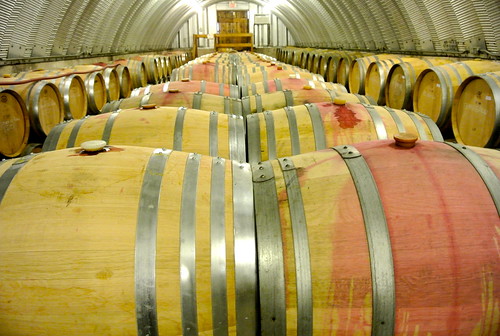
In the vineyard, Malvioire uses the most eco-friendly practices possible within the limits imposed by the growing season.
“As much as possible we don’t spray insecticides, but we do have it in our toolbox,” says Mottiar. “Sustainable makes a lot more sense than organic for us.”
Malivoire subscribes to the Oregon-based LIVE, or Low Impact Viticulture and Enology program, whose guidelines determine best farm practices. As well, Malivoire is an active member of the Wine Council of Ontario’s Sustainable Winemaking program.
I tasted through some upcoming new releases, including a gorgeous new single-vineyard rosé and Stouck Vineyard reds, with Mottiar and managing director Stephen Gash during a rather chilly tasting in the barrel cellar recently. Here’s what I liked.
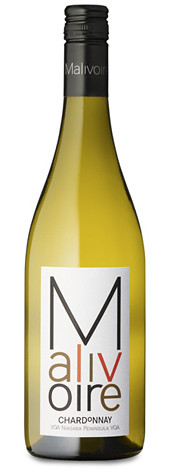
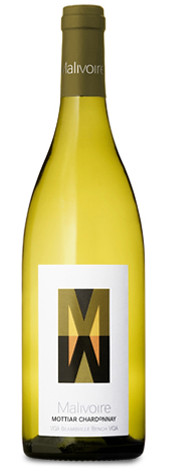
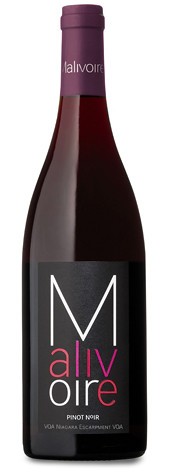
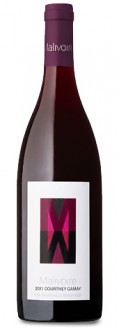
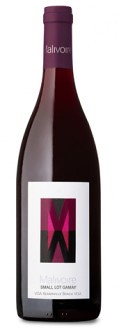
Malivoire Chardonnay 2012 ($20, Vintages Essential changing over to 2012 soon, 88 points) — Sourced from vineyards in the Niagara Peninsula, the regular cuvee Chard has a nose of pear, apple, tropical fruit and sweet oak spice. The flavours range from pear, melon and apple in a ripe style with light spice and subtle flinty minerality.
Malivoire Mottiar Chardonnay 2011 ($30, winery only, 92 points) — A beautiful Chardonnay, wild fermented in older oak barrels, and a showcase for the Mottiar vineyard with a nose of pear, lime, grapefruit and tangerine fruits with chalky minerality and light toast and spice. It shows verve and maintains a crisp edge on the palate to go with apple, pear, citrus fruits, intriguing minerality and light spice. Delicious stuff.

Malivoire Moira Rosé 2013 ($20, April release, 91 points) — Malivoire has built a reputation on its rosé program (think Ladybug) and is introducing this single-vineyard effort from Pinot Noir grown in the estate’s Moira Vineyard. It has a pure and delicate nose of pretty cherry, strawberry, tangerine and a whiff of cream. The dominant red fruits carry seamlessly to the palate and offer a refreshing and elegant summer pleaser. I am so happy that someone has made a rosé from a specific block from a single vineyard grown “intentionally” for rosé. Gash explained that Martin Malivoire returned from a trip to France and declared he wanted to make a “fresh” rosé. “Now I want delicacy,” he told his winemakers. “Pale, really pale, a balance of flavourful and light.” The grapes were sourced in the Moira Vineyard from two blocks (two different clones) of Pinot Noir. Mission accomplished.
Malivoire Small Lot Gamay 2012 ($20, winery only, 89 points) — Mottiar calls Gamay the “most important red” in the portfolio. “Every year Gamay surprises me,” he says. The Small Lot is bold on the nose with cassis, plum, cherry and raspberry fruits. It’s fresh and lively on the palate with rich fruits and lightly spiced with plenty of racy acidity through the finish.
Malivoire Courtney Gamay 2011 ($30, winery, 91 points) — This is Malivoire’s top expression of Gamay with rich plum, earth, black cherry, cigar leaf and spice on the nose. The fruit is darker and deeper on the palate with plum pudding, blueberry and bramble notes with a touch of licorice and pepper all lifted by racy acidity. Serious Gamay.
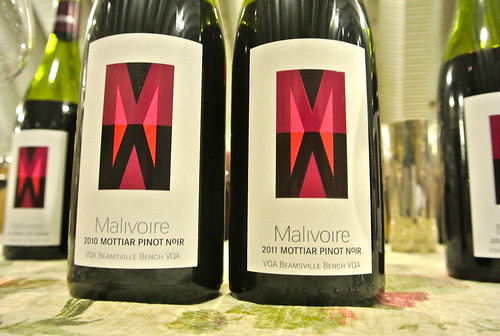
Malivoire Mottiar Pinot Noir 2011 ($40, not released yet, 91 points) — I prefer this style of Pinot as compared to the 2010, which is darker, meatier and bolder. The 2011 shows ripe cherry, pretty raspberry and elegantly appointed spice on the nose. It’s a purely expressive and finessed Pinot on the palate, feminine in style, with integrated fruit and spice and lovely intermingling minerality and vivid acidity. It shouts ‘drink me.’
Malivoire Cabernet Franc 2012 ($25, summer release, 89 points) — Sourced from the Wismer Vineyard it shows a classic Niagara nose of ripe cherry, cedar, wet tobacco and herbs with spice and pepper notes. While quite ripe on the palate there is a nice leafy note through the core. Lifted by spice and acid.
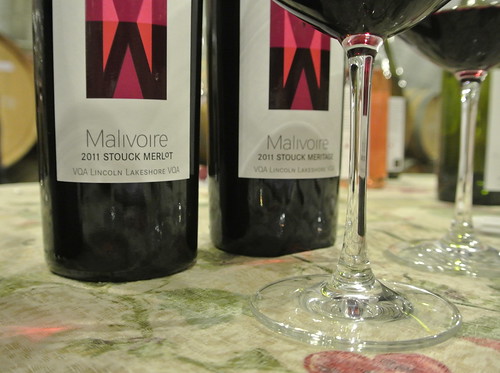
Malivoire Stouck Vineyard Merlot 2011 (release date and price to be determined for both the Merlot and Meritage, but expect to pay between $30-$40, 90 points) — The Stouck Vineyard wines first burst onto the scene during the Brock Experts Tasting in 2013. Several were shown blind to tasters and they were the surprise hit of the tasting. The 11 Merlot shows a nose of earth, mocha, cassis and black currants. It’s highly structured on the palate with bold cherry, currants and dark fruit to go with firm oak stylings and defined tannic structure.
Malivoire Cabernet Merlot 2012 ($20, April release, 91 points) — Wow wine. Though the vineyard is not included on the label of this wine, it is indeed from the Stouck. What a gorgeous nose of blackberry, cassis, currants, black cherry and spicy vanilla oak overtones. This is a rich, layered Merlot with bold and sassy fruit, considerable structure and weight and nicely balanced. I’d say Malivoire hit a homerun with this wine, especially at this price.
Malivoire Stouck Vineyard Meritage 2011 (See above for price and availability, 92 points) — A nose of rich dark fruits, spicy caramel oak nuances, mocha and nutmeg. This is gorgeous on the palate, built to last, with black currants, blackberries and red fruits to go with lovely spices, firm tannic structure and supporting acidity.





Comment here